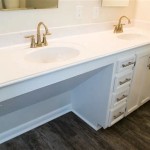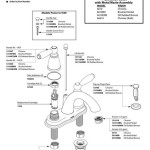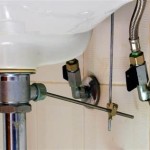Can You Drink Sink Water In the Bathroom?
The question of whether bathroom sink water is safe to drink is more complex than it might initially seem. While the water often originates from the same source as kitchen tap water, several factors can influence its potability within the bathroom environment.
Plumbing Differences and Contamination Risks
A key difference between kitchen and bathroom sinks lies in the plumbing configurations. Bathroom sinks are often connected to plumbing systems designed primarily for wastewater drainage. This proximity to waste lines can introduce potential contamination risks, especially in older buildings with outdated plumbing. Cross-contamination can occur if there's a pressure drop in the main water supply, allowing backflow from contaminated pipes into the clean water lines.
Furthermore, bathroom faucets are more likely to harbor specific bacteria and microorganisms due to their frequent contact with soap, toothpaste residue, and other personal care products. These contaminants, while not always harmful, can affect the taste and odor of the water, making it less palatable.
Faucet Aerators and Bacterial Growth
Most bathroom faucets are equipped with aerators, small mesh screens designed to conserve water and create a smoother flow. However, these aerators can become breeding grounds for bacteria, including Legionella, the bacteria responsible for Legionnaires’ disease. While the risk of infection is generally low, individuals with weakened immune systems might be more susceptible. Regular cleaning or replacement of faucet aerators is crucial to minimize bacterial growth.
Pipe Material and Water Quality
The material of the pipes within the bathroom plumbing can also influence water quality. Older homes might have lead pipes, which can leach lead into the water, posing a serious health risk, particularly for children. Even in homes with modern copper piping, corrosion can occur over time, leading to the release of copper ions into the water. While copper is an essential nutrient in small amounts, high levels can cause gastrointestinal issues. It’s essential to be aware of the pipe material in one's home and consider periodic water testing for contaminants.
Stagnant Water and Bacterial Proliferation
Water that sits stagnant in bathroom sink pipes for extended periods, such as overnight or during vacations, can become a breeding ground for bacteria. This stagnant water can have a higher bacterial load compared to frequently used kitchen tap water. Flushing the bathroom sink for a minute or two before using the water can help clear out any stagnant water and reduce potential bacterial contamination.
Bathroom Specific Contaminants
The bathroom environment introduces specific contaminants not typically found in the kitchen. Traces of cleaning products, cosmetics, and personal care products can find their way into the sink and potentially contaminate the water. These contaminants, while not always harmful in small quantities, can alter the taste and odor of the water and might pose health risks with prolonged exposure.
Local Water Quality Regulations and Guidelines
Water quality regulations vary depending on location. While most municipal water supplies meet safety standards at the point of entry into the home, the plumbing within the house can influence the quality at the tap. It’s advisable to check with local water authorities for information on water quality in your area and to follow any specific guidelines or recommendations.
Alternative Drinking Water Sources
Given the potential risks associated with drinking bathroom sink water, it's generally recommended to opt for alternative drinking water sources. Filtered water pitchers, dedicated water filtration systems, or bottled water provide safer and more palatable alternatives. These options ensure the removal of potential contaminants and provide peace of mind regarding drinking water safety.
Maintaining Plumbing Hygiene
Regular plumbing maintenance is crucial for ensuring overall water quality throughout the house, including the bathroom. This includes checking for leaks, addressing any signs of corrosion, and periodically flushing the system to prevent stagnant water buildup. Proper plumbing hygiene minimizes the risk of contamination and contributes to safer water usage throughout the home.

Is Bathroom Sink Water Safe To Drink

Is It Safe To Drink Water From Your Bathroom Tap

Is It Safe To Drink Bathroom Sink Water

Is Bathroom Sink Water Safe To Drink Get The Facts Here
.png?strip=all)
People Are Only Just Discovering Why You Shouldn T Drink Water From The Bathroom Tap

3 Reasons Your Tap Water Looks Rusty I All American Plumbing Heating Air

Is Bathroom Water Safe To Drink Victoriaplum Com

Is Bathroom Sink Water Safe To Drink Get The Facts Here

Is Bathroom Water Safe To Drink Victoriaplum Com
Do People Actually Drink Water Straight From The Tap Quora
Related Posts







